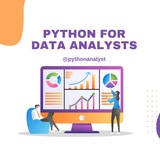Python Constructs
1. Functions in Python
A function in Python is a collection of statements grouped under a name. You can use it whenever you want to execute all those statements at a time.
You can call it wherever you want and as many times as you want in a program. A function may return a value.
2. Classes in Python
Python is an object-oriented language. It supports classes and objects.
A class is an abstract data type. In other words, it is a blueprint for an object of a certain kind. It holds no values.
An object is a real-world entity and an instance of a class.
3. Modules in Python
Python module is a collection of related classes and functions.
We have modules for mathematical calculations, string manipulations, web programming, and many more.
4. Packages in Python
Python package is a collection of related modules. You can either import a package or create your own.
Python has a lot of other constructs. These include control structures, functions, exceptions, etc
1. Functions in Python
A function in Python is a collection of statements grouped under a name. You can use it whenever you want to execute all those statements at a time.
You can call it wherever you want and as many times as you want in a program. A function may return a value.
2. Classes in Python
Python is an object-oriented language. It supports classes and objects.
A class is an abstract data type. In other words, it is a blueprint for an object of a certain kind. It holds no values.
An object is a real-world entity and an instance of a class.
3. Modules in Python
Python module is a collection of related classes and functions.
We have modules for mathematical calculations, string manipulations, web programming, and many more.
4. Packages in Python
Python package is a collection of related modules. You can either import a package or create your own.
Python has a lot of other constructs. These include control structures, functions, exceptions, etc
👍20❤3
👉 What is Python Data Structures?
You can think of a data structure as a way of organizing and storing data such that we can access and modify it efficiently.
We have primitive data types like integers, floats, Booleans, and strings.
👉 What is Python List?
A list in Python is a heterogeneous container for items. This would remind you of an array in C++, but since Python does not support arrays, we have Python Lists.
👉 Python Tuple
This Python Data Structure is like a, like a list in Python, is a heterogeneous container for items.
But the major difference between the two (tuple and list) is that a list is mutable, but a tuple is immutable.
This means that while you can reassign or delete an entire tuple, you cannot do the same to a single item or a slice.
👉 Python Dictionaries
Finally, we will take a look at Python dictionaries. Think of a real-life dictionary. What is it used for? It holds word-meaning pairs. Likewise, a Python dictionary holds key-value pairs. However, you may not use an unhashable item as a key.
To declare a Python dictionary, we use curly braces. But since it has key-value pairs instead of single values, this differentiates a dictionary from a set.
You can think of a data structure as a way of organizing and storing data such that we can access and modify it efficiently.
We have primitive data types like integers, floats, Booleans, and strings.
👉 What is Python List?
A list in Python is a heterogeneous container for items. This would remind you of an array in C++, but since Python does not support arrays, we have Python Lists.
👉 Python Tuple
This Python Data Structure is like a, like a list in Python, is a heterogeneous container for items.
But the major difference between the two (tuple and list) is that a list is mutable, but a tuple is immutable.
This means that while you can reassign or delete an entire tuple, you cannot do the same to a single item or a slice.
👉 Python Dictionaries
Finally, we will take a look at Python dictionaries. Think of a real-life dictionary. What is it used for? It holds word-meaning pairs. Likewise, a Python dictionary holds key-value pairs. However, you may not use an unhashable item as a key.
To declare a Python dictionary, we use curly braces. But since it has key-value pairs instead of single values, this differentiates a dictionary from a set.
👍11❤5
